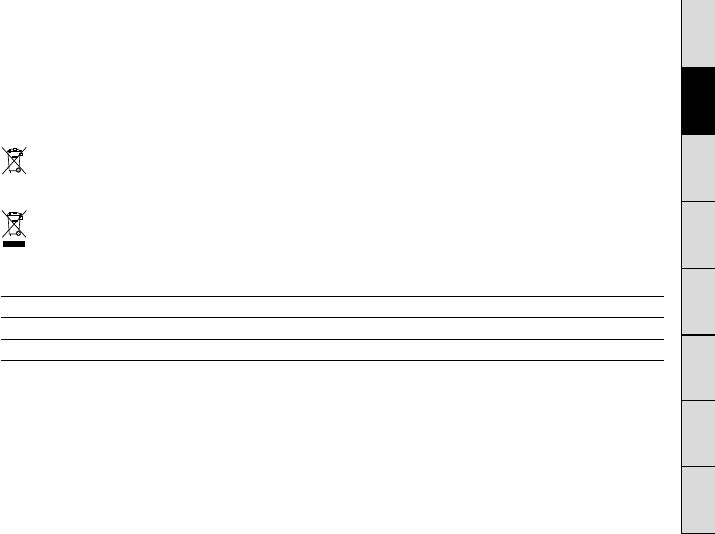User manual

cleaning agents or solvents) be used on the alarm or near to the alarm. The alarm must not be painted or
varnished! Take care to ensure than no moisture penetrates the device.
Service life
The electrochemical sensor is subject to an ageing process. The service life of the sensor is therefore
limited to approximately seven years. The sensor cannot be replaced. Therefore, please replace the entire
alarm no later than 7 years after it is first commissioned. Please note the date when the alarm was first
commissioned on the enclosed sticker (fig. 10) with a permanent marker.
Notes regarding batteries and battery packs
Used batteries must not be disposed of with unsorted household waste. Used batteries must be
recycled and may be returned free-of-charge to the place of sale. Batteries contain substances which
are harmful to the environment and to human health and must therefore be disposed of correctly.
Recycling instructions
This device must not be disposed of with unsorted household waste. Owners are required by law to
correctly dispose of used devices. Contact your local town council for more information.
Trigger threshold in accordance with EN 50291-1: 2010 + A1: 2012
10 11
Technical data
Model name FMG 4313: Device type B
Battery operation 2x 1.5-V alkaline (AA/Mignon) Energizer E91
Certification EN 50291-1: 2010 + A1: 2012
Alarm volume approx. 85 dB/1 m
Storage/transport temperature -20°C... +50°C
Permissible humidity 30 %... 95 %, non-condensing
Protection type IP X20D
Dimensions W 120 x H 80 x D 38 mm
Alarm service life approx. 7 years
Technical and design features may be subject to change.
CO concentration in the air Alarm triggered no later than
30 ppm after 120 minutes
100 ppm after 10–40 minutes
300 ppm after less than 3 minutes
GBFRITPL DESKSLCZ










